We're going tomorrow!
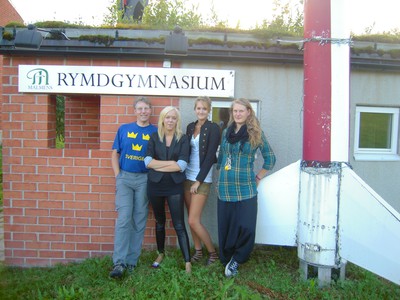
Testing
The HotIce girls testing the parachute

6 May 2010
This last week has been a very busy one for the Hot Ice team! We have spent our time programming, trying to find a lens for the camera and writing a design document that we will send in to ESA tomorrow. It’s been very difficult to decide which lens will be the optimal one since we don’t know that much about lenses and it is an ongoing struggle trying to solve this problem. We actually went to an optician this week to see if they could perhaps help us with solving this problem, but unfortunately they could not. The search for the lens continues.
Filling out the form we had to make a list of everything we have spent so far, since our budget can’t exceed 1000 euro. We have actually spent way more then anyone of us thought, though we are far from 1000 euro. We have spent 596 euro so far and for that amount we have bought the CanSat kit, the camera, the acrylic glass, special acrylic glass glue, hand warmers and lots of other small components! We have without a doubt managed to spend our money quite efficiently so far.
Another current problem is how to make the sodium acetate solution to get the best possible result from this experiment. We have done some major progress from the last time that we made this solution, but still we haven’t got it quite right. Either the solution is too sensitive to movement or not sensitive enough. We are currently working to make the perfect recipe that falls between these two categories. We also discussed what to do in case the worst scenario happens; if we are not able to make the perfect solution we will use hand warmers, since many of these actually contain sodium acetate!
With the help of our teacher we have been able to move the frame, containing the circuit card, of the CanSat from the middle of the bottom to the side of the bottom. We have consequently managed to get as much space as possible for our acrylic glass container, battery and camera. Since we managed to move the circuit card we have also decided how to place everything inside the jar, which used to be one of our biggest problems! How everything will be placed you can see below in the picture. When we moved the card we also shorted off all the cables on the circuit card and soldered them in place.(Which you also can see below) We are also almost done with the programming of the circuit card which now can (with minor difficulties) measure the pressure and temperature in our classroom! We have also constructed a shelf for the camera to lie upon to film the container from the top, how we did this you can see in the picture below.
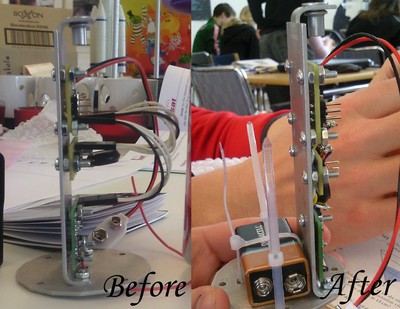

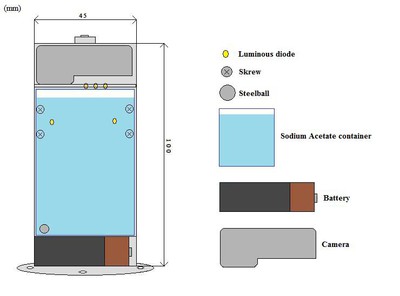
This is how we plan to place all the components in the can.
Since we will take pictures of the results of our experiment in a special microscope camera we today installed and learned a program for this on our computers. Some test picture that we took with this camera off a red leaf you can see below. When we later tried to take pictures of a sodium acetate crystal we discovered that the light from the microscope was unable to light through the crystal since the one we made a couple of days ago had turned solid white! We then decided that we would have to use some sort of loupe, which uses light from a better angle, to be able to get a good shot of the crystals. We might actually be forced to order a brand new loupe since our school did not have one that can be connected to the microscope camera.
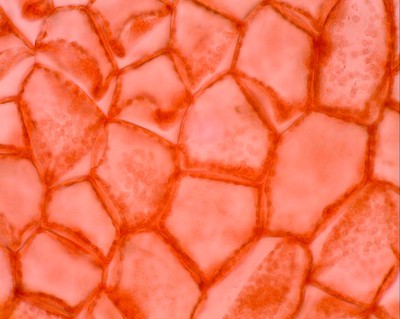
Test picture
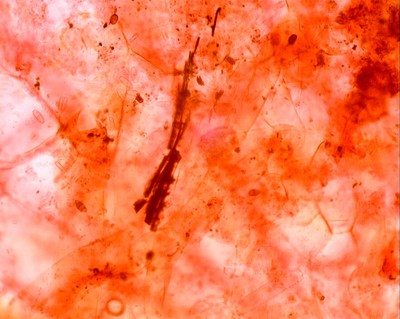
Test picture
We’ll get back to you soon with more news about the project!
We're back!
After a quite serious clash with illness we were forced to take away focus from our CanSat project for a little while but now we’ve (finally!) picked it up once again and are now working very hard to get everything done in time. Due to the time we’ve lost these last weeks our working effort will now be set to max.
Since we began to work with the project once again, we have discovered a number of problems that had not occurred to us before and that need to be solved as quickly as possible. The week that has passed has been dedicated to solving these problems, for example we have trying to figure out how to place all the parts in our CanSat jar as nifty as possible to try and use the space to the best extent.
Another problem that we have to deal with in the coming weeks is the problem of how we will be able to record the events inside the can (with our brand new miniature camera which you can see below) since we discovered that the camera is not very good at filming up close. A possible way to solve this problem is to put in some kind of lens between the camera and the jar of sodium acetate to sharpen up the recording. To investigate this matter we will test out some lenses at school to see which one works the best and then order one like it, but much smaller of course, online.
Another problem that we discovered with the camera is that we need some kind of luminous diode inside the jar if we don’t want the camera to film inside a pitch black jar. This diode we will also order online and hopefully we will be able to hook it up to the battery that will power the circuit cart inside the jar. Having to put another battery in the jar would be very hard since it’s already very crowded in there!
Last Friday two members of the team tried to make some sodium acetate solution, and the result of the experiment you can see below. The results weren’t exactly the way we wanted them since the crystallisation started way too early. This could however had been due to the fact that we put the solution outside instead of inside a refrigerator like the recipe said, putting it out there may have made the solution to cold or the wind may have started the crystallisation. More tests will be executed very soon!
Part from all that we have also made a ”test-jar” for the sodium acetate which resembles the jar we plan to put it in the actual can in Norway. This jar is made of acrylic glass that we have cut out and that we now have glued together. We will try and nail this jar shut as well to make it as compact as possible so it will not leak. Maybe we will even use silicone to get it as impenetrable as possible.
As you see we in the Hot Ice team have a lot of work ahead of us in the coming weeks. But hopefully we as a team will solve all of these little technical difficulties.

Our Cansat kit
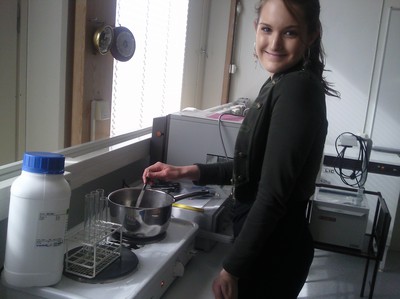
Making the Sodium acetate solution

The crystallisation
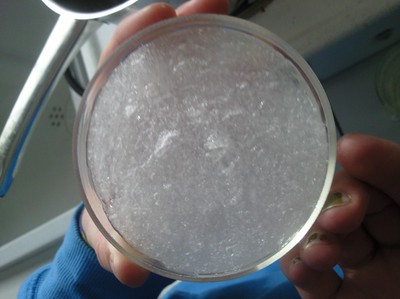
The result

Making the ”test-jar”.
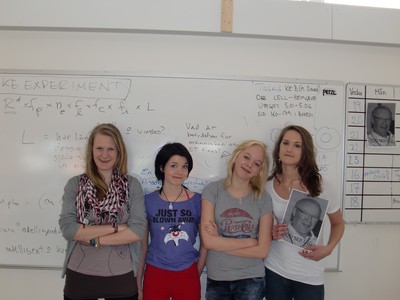
Our team+ our teacher odd on the picture

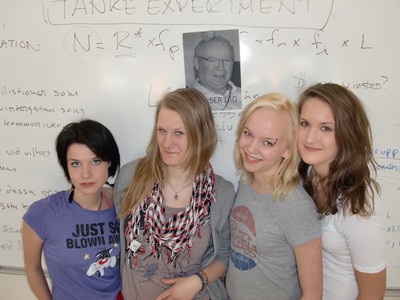
// HotIce girls
We won!
We won the competition and the HotIce-TEAM will be representing Sweden in the CanSat Competition finals in Norway!
We worked really hard on this project and I can't tell you how nice it feels to be amongst the chosen projects! Since we won we now have a lot of technical obstacles to overcome with the construction of the can and everything that will be inside it.
What now lays a head of us:
- Ordering parts for our CanSat can
- Constructing those parts into a working CanSat can
- Ordering the Sodium Acetate and other needed equipment
- Deciding what kind of container we will use for keeping the “Hot Ice” inside the rocket
- Deciding on how we will construct the device that is to start the crystallisation process
- Contacting our interested journalists, and perhaps a local newspaper as well
As you can see we have a lot of work to do in the upcoming weeks, but since we’ve got this far I don’t think a little hard work and some small constructional difficulties can stop us!
Odd Minde, our project teacher, will be going to the Netherlands to present our CanSat project and discuss matters concerning the construction of the can. When he returns to Kiruna we will decide upon the best alternatives for the construction of the different parts of the can.
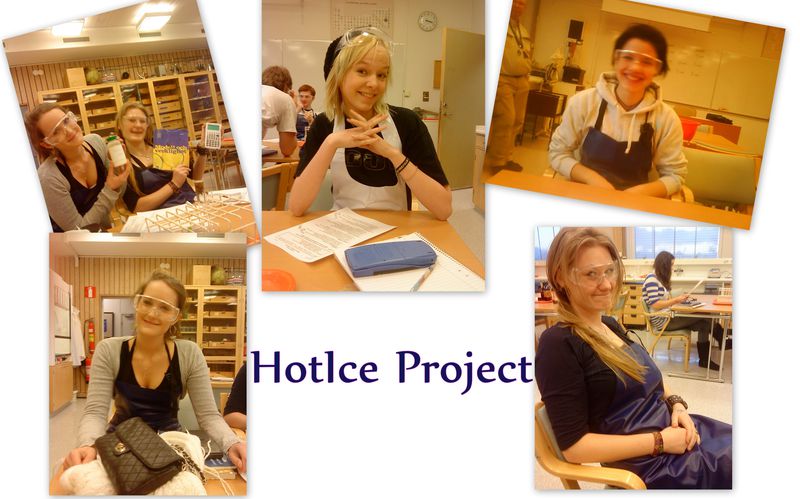
Our TEAM-members once again :)
The anticipated TEAM-picture!
While we wait for an answer here's a picture of our TEAM-members, with names, for you to feast your eyes upon.
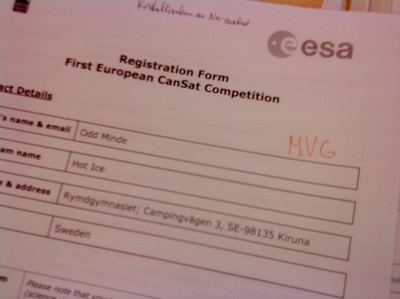
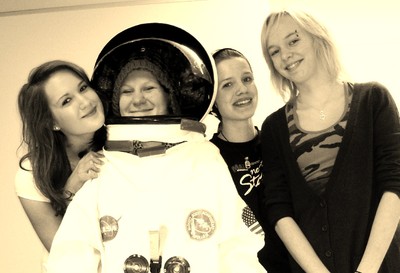
One of the chosen 6
Last Friday our group was told the pleasant news that we are one of the 6 projects that our teachers chose to send to ESA! It felt like a great honour to be chosen and it's really nice to hear that the teachers believe in us and our project. Now we’re anticipating the notification of who got chosen to go to Norway, and of course we're hoping it's us!
A picture of the TEAM will be uploaded soon!
Here is a part of our application letter where you can read more about the project and the TEAM-members different responsibilities.
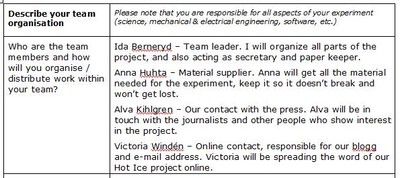
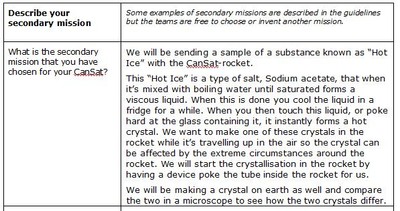

Hot Ice
Welcome to our blogg! In this blogg you will be able to read about our TEAM:s contribution to the CanSat competition 2010. What this competition is about you can read about below:
"CanSats offer a unique opportunity for students to experience their first real space-related project. Up to 10 teams will be selected to build their own small ‘satellite’ with the help of a kit in the form of a soda can and then have the opportunity to launch it on a rocket from the Andøya Rocket Range in Norway.
The CanSats will be required to complete a primary task of measuring temperature and pressure during the flight and a secondary mission of the students’ choice that may include attitude control, return to a target point on the ground, differential GPS measurements, or any other innovative experiment.
The European CanSat competition is part of ESA’s initiative to inspire young people to follow a career in science or engineering, with a view to ensuring the availability of a highly qualified work force in the space industry of the future.
The competition will offer a unique experience by enabling dialogue and interaction between students, as well as encouraging an element of competition between teams from many different countries."
This passage comes from the ESA homepage and if you want to read more about the competition you can do so here: http://www.esa.int/SPECIALS/Education/SEMR59AK73G_0.html.
Only one TEAM from our school, Rymdgymnasiet (Space High School), will be participating in this competition, so the pressure is on to be able to put together the best and most interestant project.
It took a while for our TEAM to figure out what we would want to send up with the ESA-rocket and everything from fisheyes to spiders was discussed. After a lot of searching and discussing we finally decided upon a so called "Hot Ice" experiment.
To see what a "Hot Ice" experiment can look like; feel free to check out our video below!

